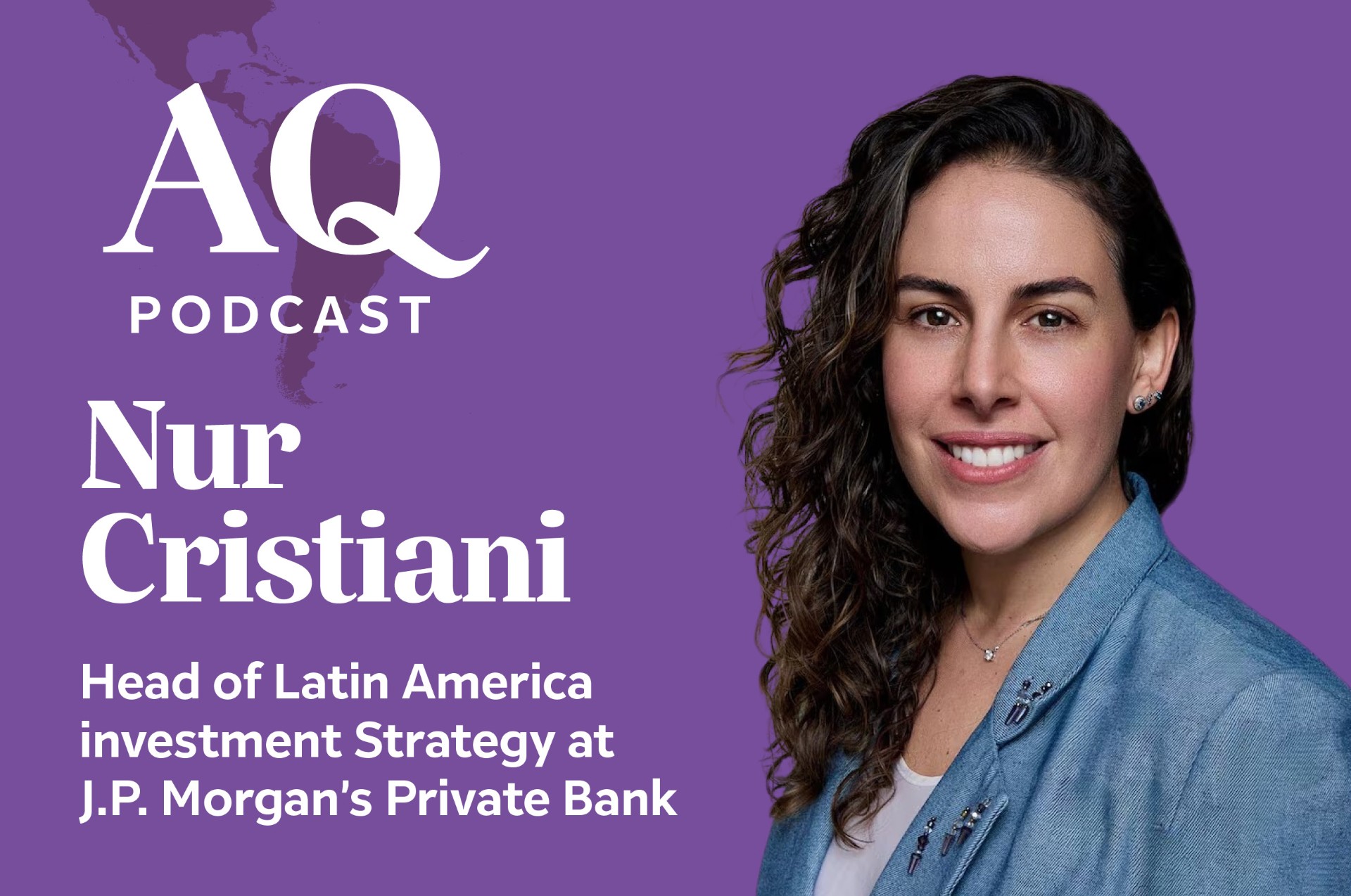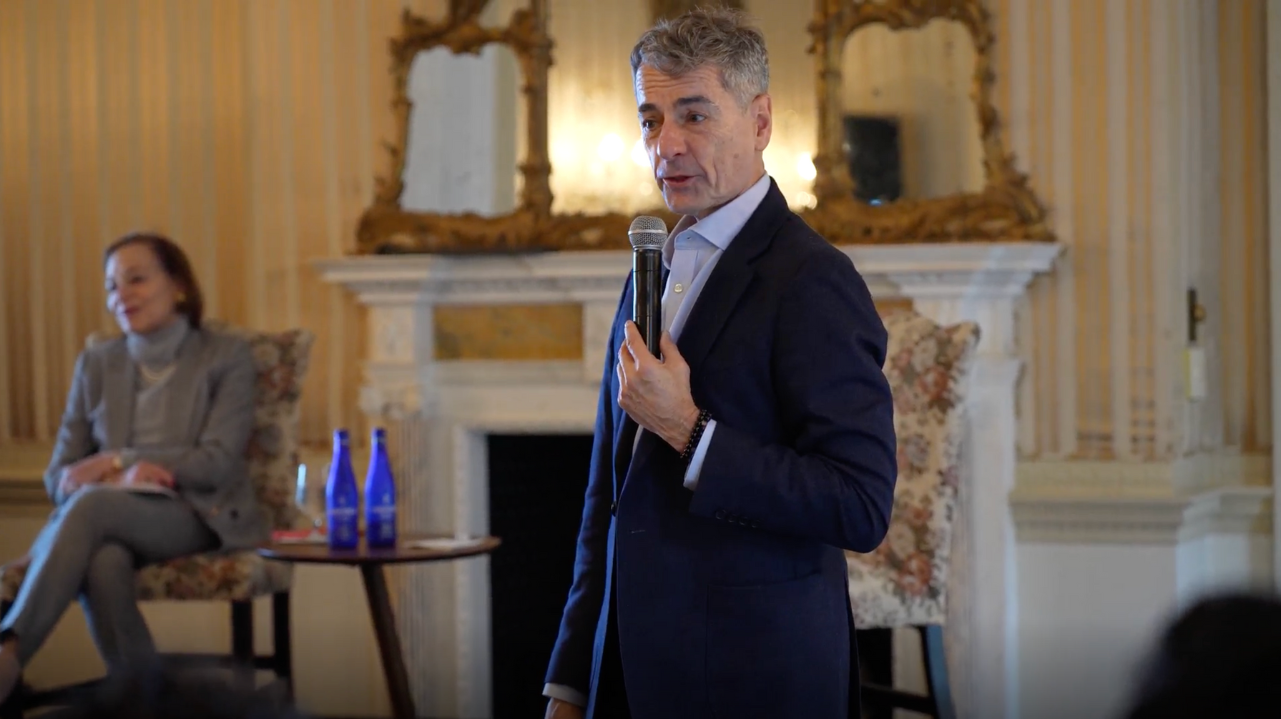Microfinance in Times of Crisis: Latin American Update
Microfinance in Times of Crisis: Latin American Update
Agreeing that Latin America has been one of the most resilient microfinance regions in the world, speakers in this November 19 panel discussed the effects of the current economic crisis on microfinance along with lessons learned and future challenges for the industry.
Speakers:
- Rita V. Foley, Chairman of the Board of Directors, Pro Mujer
- Mary Ellen Iskenderian, President and CEO, Women’s World Banking
- Christina Leijonhufvud, Head of Social Sector Finance, JPMorgan
- Tomás C. Miller, Senior Investment Officer, The Multilateral Investment Fund
- Ann Miles, Managing Director, Blue Orchard USA (Moderator)
Summary
On November 19, the Americas Society/Council of the Americas hosted its third microfinance panel, “Microfinance in Times of Crisis: Latin American Update.” Panelists discussed overall effects of the current economic crisis on microfinance along with lessons learned and future challenges for the industry.
Keynote Remarks by Rita V. Foley
Pro Mujer Chair Rita V. Foley began the panel with a brief history of the organization’s lending methodology. Since its inception, Pro Mujer has given $689 million in small loans to women between the ages of 36 and 44 as well as providing healthcare and training to more than one million women and their five million family members. Turning to a regional view, Foley said the economic crisis has resulted in fewer remittances, rising unemployment, and—most importantly to microfinance institutions (MFIs)—an overall credit vulnerability. MFIs have thus seen an increase in default possibilities, changes in interest rate caps and regulatory frameworks, and a reduction of capital flows from donors and investors resulting in an overall decrease in portfolio growth. Pro Mujer has weathered the storm by tightening loan standards to avoid over-indebtedness and by increasing management levels and data collection. The organization also continually assesses its products and maintains training and health services for its clients.
Impact of the Crisis on Microfinance
Blue Orchard’s Ann Milles, who moderated the discussion, opened up discussion by asking panelists to comment on the crisis’ impact and how they have adjusted. Tomás Miller of the Multilateral Investment Fund (MIF) began his comments on a positive note, saying: “The effects of the crisis are not what we feared a year ago.” Three years ago, the MIF estimated that, by 2012, microfinance in Latin America would triple—a figure that is right on track. Nonetheless, certain countries, such as Bolivia and Nicaragua, have reached higher penetration levels wherein 60 percent of the population can gain access to microfinance loans. In contrast, penetration in Argentina and Brazil is less than 2 percent. With remittances down by 12 percent from the 2008 level of $68 billion, Miller said MFI has seen an impact on the entrepreneurs’ capacity to repay loans. However, the sector remains strong and has growth potential. Mary Ellen Iskenderian of Women’s World Banking (WWB) said that Latin America, where WWB has 11 network members, has “gone back to basics” and taken a look at existing portfolios, allowing the region to be one of the most resilient regions in the microfinance sector. JPMorgan’s Christina Leijonhufvud. said the crisis has been the first major test for the microfinance sector and agreed that Latin America has been one of the most resilient microfinance regions in the world. She noted that a one cause across regions has been a sudden abundance in capital that has increased portfolio risks from 3 to 5 percent while average returns on equity have decreased.
Current and Future Challenges for Microfinance in Latin America
Milles shifted the conversation to focus on the relationship between savings and regulation in Latin America. He noted that 80 percent of microfinance activity occurs under the watch of regulatory institutions so that MFI supervisors work with regulators to ensure savings protection. Iskenderian seconded this notion by saying that, in the Latin American context, MFIs and regulators have worked together to positive ends. With regard to the actual indebtedness of borrowers, Pro Mujer’s Foley cited the need for a strengthened credit system that would create visibility between borrowers and creditors. Miller agreed, adding that the MIF avoided passing on too much risk to clients to ensure repayment abilities.
From an investment perspective, Miller opined that investors in the sector would remain committed and that their presence allows for innovations that make MFIs stronger. Foley said investors see long-term benefits in investing in Latin American MFIs while Leijonhufvud saw it equally necessary for sector investors to bear the responsibility of encouraging transparency and take higher risks for better returns. Iskenderian emphasized WWB efforts to examine how to quantify social returns.
Looking Forward
Panelists generally agreed on the challenges that lie ahead for the microfinance sector and specifically the possibility of increased indebtedness in certain countries such as Nicaragua. They remained positive that investment in technology and operations management can ensure the quality of client services. Both Miller and Iskenderian said the silver lining of the crisis has been institutional recognition that offering savings products is both beneficial to clients and a less expensive source of local currency financing. Leijonhufvud maintained that the crisis came at a beneficial time because it has attracted commercial capital that will, in the long run create a stronger microfinance sector.








